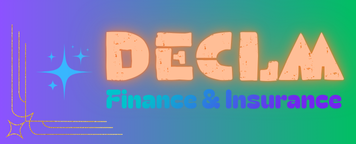Honestly, we do try to keep things tight here in The Protocol newsletter. The sorun is, there’s just so many good stories in crypto. That’s true even on a slower week as many of our readers and developers in Asia head toward the Chinese New Year on Feb. 10. (The “year of the dragon” is supposed to be bullish, by the way.)
In this week’s issue we’ve got:
This article is featured in the latest issue of The Protocol, our weekly newsletter exploring the tech behind crypto, one block at a time. Sign up here to get it in your inbox every Wednesday. Also please check out our weekly The Protocol podcast.
Network news
:format(jpg)/cloudfront-us-east-1.images.arcpublishing.com/coindesk/QPQP3VQDCNAJBNFKYGSGMCWMEY.png)
Screenshot showing Tuesday’s outage on Solana. (Status.solana.com)
SOL CRUSHING. It was supposed to be a cause for celebration: On Feb. 25, the Solana blockchain would complete a full 365 days without an outage – seen as a remarkable milestone given its historic jankiness. So notable it was, in fact, that analysts at Coinbase Institutional called it out in a report last week: “Solana is fast approaching its first full year mark without any downtime, showcasing its significant ecosystem progress, especially when compared to an early history of crashes that halted the chain for days at a time.” But the anniversary was not to be. On Tuesday, some 20 days shy of the mark, Solana went down for nearly five hours, in what one blockchain validator described as “performance degradation.” According to the website status.solana.com, “Core contributors are working on a root cause report, which will be made available evvel complete.” CoinDesk columnist Daniel Kuhn noted that even as Solana’s top developers, led by co-founder Anatoly Yakovenko, promote the blockchain as a top contender in the race for relevance, they have continued to describe the project as being in “beta.” After Tuesday’s outage, such a descriptor might seem fitting. On the social-media platform X, fans of rival projects from Ethereum to Cardano and even Litecoin and VeChain were quick with the jabs. The prediction market Polymarket posted what appeared to be a betting forum on whether Solana would “go down again in February,” with 89 cents on “no” and 11 cents on “yes.”
BOLD PREDICTIONS: Theta Capital, which manages a fund-of-funds program for crypto-native venture capital, gave CoinDesk an exclusive advance peek at its “Satellite View” report compiling blockchain predictions from 20 top investors, founders and institutional chieftains. According to the report, the compilation keys off Theta Capital’s annual Legends4Legends conference, which raises money for Alternatives4Children (A4C), a “charitable foundation established in 2011 in the Netherlands supporting small-scale educational projects with high impact potential.” It runs 60 pages, and goes into a lot of depth on market and regulatory trends, but here are some of the boldest predictions for blockchain tech:
ALSO:
Protocol Village
Top picks of the past week from our Protocol Village column, highlighting key blockchain tech upgrades and news.
See the entire Protocol Village list from this past week here.
How to Expand a Social Network Beyond Nerds: Q&A With Dan Romero
:format(jpg)/cloudfront-us-east-1.images.arcpublishing.com/coindesk/DBIYQT5U7REHNK4GDPUDQO7PAA.jpg)
Dan Romero quit his job at the big U.S. crypto exchange Coinbase five years ago to help found Farcaster, described in the project’s own documentation, as a “sufficiently decentralized social network built on Ethereum.”
Farcaster’s launch was sufficiently notable to attract a sizable population of blockchain developers and crypto fans as users of the platform – who gravitated toward the idea of a decentralized version of Twitter, now X. It didn’t hurt that Ethereum co-founder Vitalik Buterin signed up as a user of Farcaster’s Warpcast app, and has made regular posts.
But what has vaulted Farcaster to the center of Crypto-Twitter conversations over the past couple weeks is the project’s release on Jan. 26 of its new “Frames” feature – essentially allowing apps to run within posts, so users don’t have to click off to another site. According to a dashboard on Dune Analytics, average daily users on Farcaster has shot up from fewer than 2,000 as recently as late January to now nearly 20,000.
CoinDesk’s Jenn Sanasie interviewed Romero this week about Farcaster, the new functionality, and what it’s like to break out. A görüntü is here, and the following is an edited transcript.
Click here for the full Q&A with Dan Romero by CoinDesk’s Jenn Sanasie
Money Center
Fundraisings
Deals and Grants
Data and Tokens
Regulatory and Policy
Data Corner
:format(jpg)/cloudfront-us-east-1.images.arcpublishing.com/coindesk/YYJYWAT5Y5ASNCMBKRP7CWISGU.png)
https://messari.io/report/discussion-does-ethereum-need-a-new-narrative
Calendar
